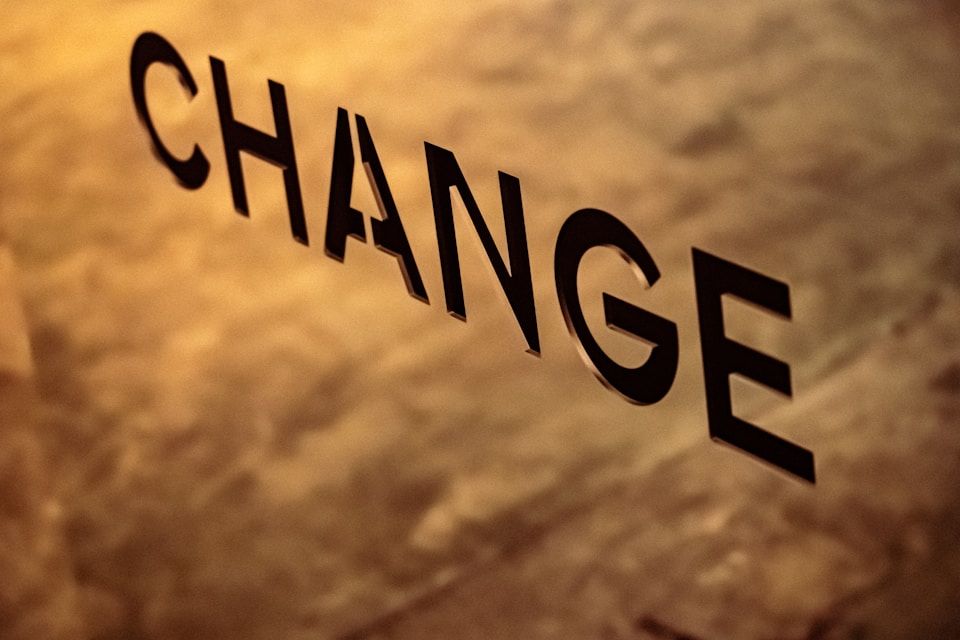Building a Change-Ready Culture
What it really takes to make change stick — and scale.
Most organizations say they want to be “change-ready.” Fewer are willing to do the work to become it.
That’s because true change readiness isn’t about enthusiasm for new ideas — it’s about the infrastructure and introspection required to make those ideas real. It’s not a communications plan. It’s not a vague sense of agility. It’s a deliberate culture-by-design effort that aligns people, priorities, and power around the ability to evolve — and evolve again.
Here’s what that takes:
1. Alignment — And Not Just on Paper
Change-ready cultures start with clarity. There’s a shared understanding of where the organization is going, why it matters, and what success will actually look like — not just in terms of milestones, but in how people work and lead together.
That alignment must be layered — not just top-down. It needs to reach across business units, functional teams, and levels of leadership. A misalignment at any level can quietly erode progress, delay decisions, and breed second-guessing mid-flight.
2. A Willingness to Embrace Dynamic Tension
Real transformation creates natural tension — between what is and what could be. Between current performance and future potential. Between honoring legacy and making room for what’s next.
Change-ready cultures don’t flinch at that tension. They expect it. They use it. The healthiest teams don’t eliminate tension — they channel it. That requires psychological safety, leadership maturity, and a shared commitment to the greater goal.
3. Clear Measurement — Beyond Just Tasks and Timelines
If you can't measure it, you can't manage it — and you certainly can’t change it.
Change-ready cultures measure progress differently. They don’t just track activity; they track adoption. They evaluate the human side of change: what’s landing, what’s lagging, and where support is needed. They recognize that outcomes are
not just project milestones — they’re behavior shifts, mindset changes, and new norms.
This kind of measurement keeps the work honest. It also makes course correction possible before credibility is lost.
4. Capacity and Capability — To Do the Work and Lead Through It
No amount of strategic intent will make up for a lack of resourcing.
To be change-ready, organizations must have the capacity (the bandwidth to absorb and support change) and the capability (the skills and tools to do it well). That includes:
- Managers equipped to lead change conversations
- Employees who understand how change impacts them and how to adapt
- Change professionals or partners who can support execution at scale
Without this foundation, change becomes dependent on heroics — not systems.
5. Executive Sponsorship That’s More Than Symbolic
Change-ready cultures are anchored by visible, active executive sponsorship. But not just showing up in kickoff meetings or on PowerPoint slides.
We’re talking about sponsors who:
- Engage in the real work of aligning stakeholders
- Remove blockers quickly and visibly
- Share risks, not just rewards
- Stay engaged after go-live
Their involvement signals that the change matters — not just operationally, but strategically and culturally.
6. Executives Willing to Role Model and Reinvent
This is often the dealbreaker.
Organizations can only be as adaptive as their leaders are. If executives aren’t willing to evolve how they show up — to model the behaviors, mindset, and decision-making that the future requires — the organization will default to the old way.
Even worse? When leaders say the right things but do the opposite. A change-ready culture requires authenticity — not performance. It takes courage, vulnerability, and a willingness to go first.
7. A Culture That Doesn’t Punish Learning
Change is experimentation. Some things will work. Others won’t. And if every stumble is met with blame or silence, you train people to stop trying.
Change-ready cultures normalize iteration. They celebrate progress over perfection. They reward curiosity, feedback, and course correction — not just big wins.
This creates a climate where change isn’t feared — it’s expected. Where learning is part of leadership. And where evolution becomes a muscle, not a one-time moment.
The Bottom Line? Culture Isn’t a Backdrop — It’s a Lever. You don’t build a change-ready culture with slogans or surface-level workshops. You build it by aligning the work with the way people work. You hardwire it into systems, roles, and expectations. And you lead it — not just as an initiative, but as a way of being.
At Meaningful Change Consulting, we help executive teams design the cultural conditions that make change not only possible, but sustainable. Because a strategy without a change-ready culture? That’s just wishful thinking.
© 2025 Meaningful Change Consulting, LLC. All rights reserved. This content reflects the proprietary approach and consulting insights of Meaningful Change Consulting.









